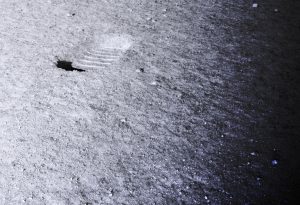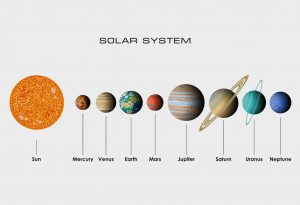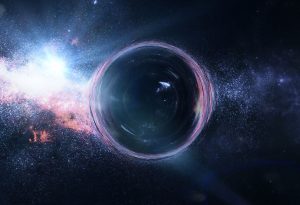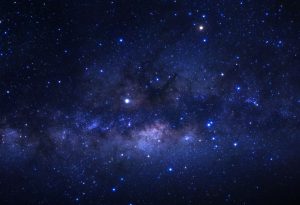Space – a term that is shrouded in mystery and one that contains many marvels of the universe. There are way more than billions of galaxies in space and just imagining the far corners of the universe is an incomprehensible feat for the human brain!
In this article, we’ve gathered a list of 20 interesting facts about space for kids which, hopefully, will serve as a starter guide to the wonders of space. Read on and enjoy.
Fun Facts and Information About Space for Children
Ever wondered about the Sun, stars, moon or asteroids and felt that it never made sense? Fret not, we’ve got you covered. Here are 20 interesting facts about space for kids which will leave you mesmerized by the mysteries and wonders of the universe.
1. Asteroids
An asteroid speeds down into the Earth’s stratosphere every year, but luckily, it burns up to smithereens before it reaches the atmosphere. Lucky for us! Here’s another fun fact about asteroids- the first asteroid was discovered in 1801 by an Italian Mathematician and Astronomer called Giuseppe Piazza. The asteroid was known as ‘Ceres.’ Most asteroids are composed of rocks and metals.
2. Tire Tracks on The Moon
There are tire tracks and signs of mankind’s footsteps on the Moon. The reason for this is because no winds blow on the moon.

3. The Sun
It takes more than a million Earth-sized planets to fill up the sun! Not just that but the sun is considered approximately 300000 times larger than the earth and is 14.9 billion km away! It has been forecasted that there will come a day when the Earth will be consumed by the sun.
4. Manmade Objects in Space
The first manmade object to enter space was launched by a Russian satellite named Sputnik back in 1957! ‘Sputnik 2’ was launched by the USSR on November 3, 1957, and a homeless dog named ‘Laika’ was launched along with it. Laika was the first dog to enter space but passed away unfortunately since the satellite couldn’t make it back to Earth.
5. Why The Moon Glows and Tracks Us
It’s a fascinating fact indeed that the sun’s rays bounce off of the Moon’s surface which later is passed on to the Earth, thus making it appear as if the moon is glowing. What makes this even more fascinating? It takes only 1.25 seconds for the moon to do just that!
Additionally, since we move a very small distance on the Earth, it appears as if the moon is following us.
6. Spaghettification
Do you love spaghetti? Well, that’s what any human will turn into once he lands inside a black hole in space. ‘Spaghettification,’ is when you’re literally, we quote, “pulled and ripped apart” by gravitational forces when landing inside a black hole. This makes it impossible for lifeforms to survive in black holes.
7. Day And Night
The Earth rotates on an invisible axis and orbits around the sun just like the other seven planets in the Solar System. Day and night occur depending on which side of the earth faces the sun. The Earth takes 24 hours to make one complete rotation which leads to days and nights on our planet.
8. There Are Eight Planets
Previously, Pluto used to be considered a planet just like the rest of the remaining ones in our solar system. Pluto wasn’t large enough to be considered a planet and hence, was dubbed, as a ‘dwarf planet.’ This is why there are eight planets in the solar system and not nine anymore.

9. Scars on The Moon
There are lots of natural phenomena occurring on the Earth all year round like erosions, tsunamis, earthquakes and other natural disasters which constantly lead to the reformation of the Earth’s surface. The Moon doesn’t have this going for her which is why the Moon has got a lot of craters and scars in comparison to the Earth.
10. High and Low Tides
The high and low tides of oceans are caused due to the gravitational pulls of the moon and the sun.
11. Neil Armstrong
Neil Armstrong was the first man to ever touch the Moon’s surface and walk on it. He landed on the moon in 1969, and the only way to wipe off his footprints (and other astronauts’) is by making another space body hit and demarcate the moon’s surface.
12. Meteoroids
The size of a meteorite ranges between the speckle of dust to 10 meters in diameter! We refer to giant meteoroids as asteroids. When solid debris from space enters the Earth’s atmosphere and lands on the surface, we call it a meteorite. On the other hand, if it burns up midway when falling through the atmosphere before reaching the surface, we call it a meteor.
13. Black Holes
Black holes are regions of space where no light or particulate matter can escape the space. This phenomenon is due to the intense gravitational pull of these so-called ‘Black Holes’ which makes it impossible for even light rays or electromagnetic radiations to pass through.

14. The Star ‘Aldebaran’
One of the most amazing space facts is about the Pioneer Spacecraft that was sent to a star called the Aldebaran in space back in 1972. NASA scientists discovered signs of this spacecraft again in 2003. What makes this discovery astounding is the fact that it normally takes 2 million years to reach Aldebaran.
15. The Unknown Universe
The depths of the universe are still a mystery to many scientists as 96% of its total mass remains yet unknown. Over 80% of the matter in the Universe cannot be seen through which is referred to as ‘Dark Matter’ and is theorized to be made from undiscovered subatomic particles.
16. The Milky Way
The Milky Way is located at the heart of our galaxy or at the centre of the Solar System. Just like the Earth, the solar system revolves around the milky way. This has been recorded to be at 170 miles a second!
17. The Invisible Planet
There is only one planet that is invisible to the naked eye, and that is Neptune. You may be wondering how Scientists saw it? Well, they didn’t. Arithmetic calculations and observations contributed to its sighting.
18. Stars
Stars are basically huge balls of hot gases (such as mixtures of hydrogen and helium) that glow in space. The sun is a star too, and there are approximately 100 billion stars in our galaxy, and the Milky Way is just a band of stars that form in our night sky!

19. 90377 Sedna- The Planetoid
One year on Sedna is equal to 10,500 years on Earth. Sedna is an asteroid that’s referred to as a planetoid because it shares similar physical features as that of the Earth. It’s located at a distance of about three times as far as Neptune within a hypothesized Oort Cloud. It’s considered a dwarf planet too.
20.Silent Space
Space is completely silent since there’s no atmosphere in it. Sound waves can’t travel in space either since there’s no medium to travel for sound waves. Radios are used in communications as radio waves are transmittable in space.
And here’s a bonus space fact- Venus is the hottest planet in the universe with a recorded surface temperature of 450 degrees Celsius!
These interesting facts on ‘Space’ will leave your kid spellbound. These facts will be a great addition to his knowledge. But for his all-round development, you need something more. Try FirstCry Intellikit, a learning program based on the theory of multiple intelligence, you can assist in your child’s overall development by means of play.
Did you enjoy these fun facts? We sure hope so. Feel free to share more facts below or any tales of the universe if this article piqued your interest.









